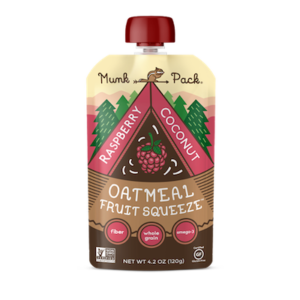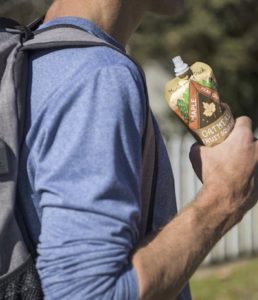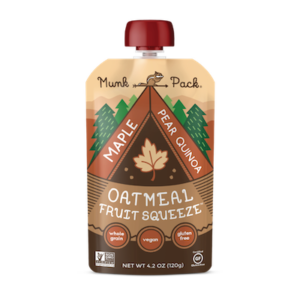Celebrate National Breakfast Month with Oatmeal Fruit Squeezes
At first an item that came across our desk seemed a totally zany idea: Munk Pack’s ready-to-eat Oatmeal Fruit Squeezes to time with “National Breakfast Month” and the back-to-school season.
But much to our surprise, the product tastes great (it could have a little more texture, true), so much more satisfying than the synthetic feel of the “health” cookie, and certainly more so than a protein bar, both of which made us ravenous for sugar afterward. (Part of the answer is the oat itself, see below). And Oatmeal Fruit Squeezes really do feel energizing, a feeling which is augmented with motivating images of sports to go along with it.
They fit the mission of the Munk company owners, looking for a pure, healthy food with real, wholesome ingredients for their professional lives, health issues and hiking adventures. For details, please see (//munkpack.com/about/our-story/)
Munk Pack’s Oatmeal Fruit Squeezes are packed with whole grains and fruit bites in a resalable, BPA-free pouch. They are currently available in five delicious flavors, including Apple Quinoa Cinnamon, Maple Pear Quinoa, BlueBerry Acai Flax, Raspberry Coconut and Peach Chia Vanilla. They are gluten free, vegan and non-GMO, and contain no soy, dairy, eggs, sugar alcohols or trans fat.
Oats have long been the go-to grain in the health and athletic field. In fact, it was on the short list of grains that aUCLA psychic nutritionist, Eileen Poole wrote for me 25 years ago – so I’m ready for a change of format. Still, the humble oats, were the last of the major cereal grains to be domesticated in Europe around 3,000 years ago. In fact they were, for a long time, regarded as weeds growing within cultivated fields of other crops! In fact, Greeks and Romans considered oats to be nothing more than a diseased version of wheat, dismissive of the Germanic tribes who ate them.
Part of the reason oats were slow to be used in human diets is because they go rancid very quickly because of their inherent natural fats and a fat dissolving enzyme. As a result, they have to be processed immediately after harvesting. Even today, less than 5% of the oats now grown commercially are for human consumption and the rest mostly used as animal fed.
I always wondered why oats didn’t make me feel hungry like other grain products do. It’s because oats contain more soluble fiber than any other grain. The body turns it into a kind of thick, viscous gel that moves slowly through the body for a longer, full feeling after eating them. Soluble fiber also slows the absorption of glucose into the body, so it eliminates the spiking sugar highs and lows. And, by inhibiting the re-absorption of bile into the system, it forces your liver to get its cholesterol fix from your blood, which in turn lowers blood-serum cholesterol.
Oats also have anti-inflammatory properties, clinically proven to help heal dry, itchy skin -which is why you see them in so many skin care products.
Oats in order of least to most processed are: Oat groats, or whole oats; oat bran, Steel-cut oats, or Irish oats: Rolled oats, or old-fashioned oats; Quick oats, Instant oats and oat flour (GF and does not rise).
For more detailed information, please see John K Williams full article: //magazine.fighttimes.com/a-brief-history-of-oats-and-how-you-should-eat-them/






 Gerry Furth-Sides
Gerry Furth-Sides  Barbara Hansen
Barbara Hansen  Chef-owner Alain Cohen
Chef-owner Alain Cohen  Roberta Deen
Roberta Deen  Jose Martinez
Jose Martinez  Nivedita Basu
Nivedita Basu